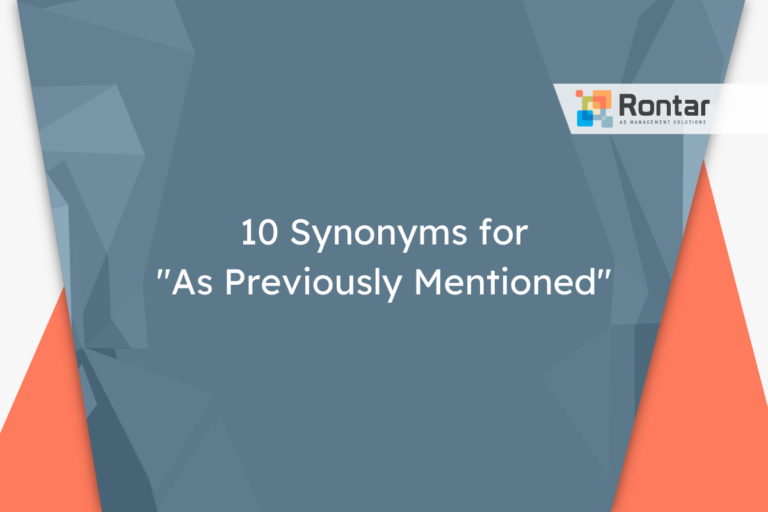10 Alternatives to “Kill Two Birds With One Stone” (With Examples)

In the professional world, it’s important to speak clearly and respectfully. Sometimes, phrases like “kill two birds with one stone” can seem out of place or even offensive.
This article lists ten alternatives that carry the same meaning but are more suited for a work environment. Whether in reports, meetings, or everyday conversations, using these alternatives can make your communication more effective and appropriate.
Is It Professional to Say “Kill Two Birds With One Stone”?
Whether or not it’s professional to say “kill two birds with one stone” depends on the context and the audience. Generally, this phrase is used to describe a situation where you can achieve two goals with a single action. It’s often seen as efficient and clever in problem-solving scenarios. However, in professional settings, it’s important to gauge the formality and sensitivity of the situation. Some may find the imagery of the phrase violent or inappropriate, so understanding your audience is key.
Here’s an example:
Kill two birds with one stone by setting up a single meeting to discuss both the budget and the upcoming project deadlines.
Now, let’s look at the pros and cons of using this phrase:
Pros:
- It succinctly describes being efficient and effective in achieving multiple objectives.
- The phrase is widely recognized and understood, reducing confusion.
Cons:
- Some might find the imagery behind the phrase violent or unpleasant.
- It may not be considered professional or appropriate in all work environments.
Considering these aspects, one might seek an alternative phrase that conveys a similar message but is more neutral or positive. Looking for synonyms or alternatives ensures that the language you use is suitable for your audience, avoiding any potential discomfort or misconceptions. Alternatives to “kill two birds with one stone” can present the same smart efficiency without the risk of offending anyone, making them worth considering in professional and formal contexts.
10 Other Ways to Say “Kill Two Birds With One Stone”
Here are ten professional alternatives that closely match the meaning of the original phrase:
- Achieve two goals at once
- Double the benefit
- Two for the price of one
- Multi-task efficiently
- Accomplish multiple objectives simultaneously
- Solve two problems with one solution
- One action, multiple results
- Maximize efficiency
- Get more done in less time
- Hit two targets with one arrow
1. Achieve two goals at once
This alternative is a direct and simple way to convey the idea of being efficient without using any imagery that could be considered violent or inappropriate. It emphasizes the positive outcome of achieving goals, making it professional and polite.
This phrase is better suited for formal discussions where clarity and a focus on outcomes are important. It’s straightforward, making it easy for everyone to understand the objective without any risk of offense.
Here are two examples to show how you might use this alternative:
Achieve two goals at once by combining the team briefing with a training session.
Achieve two goals at once by integrating customer feedback into the new design.
2. Double the benefit
Using “Double the benefit” suggests not just efficiency but also added value. It’s a professional synonym that highlights the advantages of a single action. This phrase implies a positive return or gain, making it suitable for both formal and informal settings.
When discussing projects or strategies where the outcomes provide added value beyond the initial objective, this phrase shines. It’s particularly effective in meetings or presentations where stressing the value of an approach is key.
Examples make this clearer. Here are two:
Double the benefit by using software that automates both billing and client communication.
Double the benefit of the workshop by including team-building exercises.
3. Two for the price of one
“Two for the price of one” is often used in a marketing context but can be a professional and informal alternative in business conversations. It clearly conveys getting extra value without extra effort or cost, appealing in many professional scenarios.
This alternative is suitable when you want to emphasize cost-effectiveness along with efficiency. It works well in discussions about budgeting, resource allocation, or when proposing solutions that save money.
Here’s how it’s used:
Two for the price of one by consolidating our software subscriptions.
Two for the price of one when we train new hires to manage both sales and customer service.
4. Multi-task efficiently
Using “Multi-task efficiently” speaks directly to the skill of handling multiple tasks well. It’s a professional way to describe being productive without giving the impression of being overwhelmed. This phrase is great for workplace environments that value task management and productivity.
When the focus is on an individual’s capability or the strategic planning of tasks, this phrase is particularly applicable. It’s fitting for performance reviews, project planning, or any scenario where managing several tasks is a positive attribute.
Check out these examples:
Multi-task efficiently by scheduling overlapping project timelines that don't conflict.
Multi-task efficiently by delegating administrative tasks while focusing on creative development.
5. Accomplish multiple objectives simultaneously
This phrase takes a straightforward approach, emphasizing the ability to handle various goals at the same time. It’s very much a professional expression, fitting into formal reports or strategic plans. It implies a high level of planning and execution.
It is especially meaningful in contexts where detailing the achievement of strategic goals is necessary. Planning sessions, project proposals, and goal-setting meetings are the perfect settings for this alternative.
For clarity, here are examples of its use:
Accomplish multiple objectives simultaneously by aligning the marketing campaign with market research objectives.
Accomplish multiple objectives simultaneously through cross-departmental training.
6. Solve two problems with one solution
This alternative is all about practicality and efficiency. It highlights the cleverness of finding a single solution for multiple problems, making it a professional choice. It’s ideal in situations that require innovative thinking and problem-solving abilities.
This phrase is best used when you want to highlight the strategic thinking behind a decision. It’s particularly effective in meetings or discussions focused on problem-solving, innovation, or streamlining processes.
Here are two sample uses:
Solve two problems with one solution by creating an FAQ section that helps both staff and customers.
Solve two problems with one solution by implementing a new schedule that increases productivity and employee satisfaction.
7. One action, multiple results
“One action, multiple results” underscores the efficiency of a single act leading to several positive outcomes. This professional alternative is clear and direct, making it suitable for formal presentations or detailed discussions on strategy and planning.
This phrase is more appropriate when you’re focusing on the outcomes of an action. It’s strong in scenarios where the efficiency of a process or strategy is being evaluated or showcased.
Here are examples to consider:
One action, multiple results by implementing a customer loyalty program that boosts sales and customer satisfaction.
One action, multiple results by adopting a flexible work policy that increases productivity and employee retention.
8. Maximize efficiency
“Maximize efficiency” is a broadly applicable professional term that can be used in various contexts. It focuses on the optimal use of resources to achieve the best possible outcomes. This alternative is especially valuable in professional settings that prioritize productivity and resource management.
This phrase shines in situations where the goal is to streamline operations or make the best possible use of time and resources. It’s perfectly suited for discussions on improvement, process refinement, or when suggesting ways to enhance workflows.
Here’s what it looks like in action:
Maximize efficiency by centralizing data access for all departments.
Maximize efficiency by automating routine tasks with software solutions.
9. Get more done in less time
“Get more done in less time” emphasizes productivity and the value of time. It’s a professional and straightforward way of highlighting efficiency. This alternative is great for motivating teams or discussing productivity improvements.
This phrase is particularly effective in settings where time management is a focus. Whether in team meetings, time management workshops, or when planning project timelines, it underscores the importance of efficiency.
Here are two examples to demonstrate its application:
Get more done in less time by adopting agile methodologies in our project management.
Get more done in less time by utilizing software that automates repetitive tasks.
10. Hit two targets with one arrow
“Hit two targets with one arrow” is a metaphorical way of expressing the idea of efficiency similar to the original phrase but uses less violent imagery. It’s a professional alternative that works well in conversations focused on goals and outcomes.
This phrase is most suitable in contexts where achieving multiple objectives with a single effort is being highlighted. It’s particularly effective in strategic planning, goal-setting, and when emphasizing smart, focused actions.
Here are two samples to illustrate this alternative:
Hit two targets with one arrow by integrating customer service feedback directly into product development.
Hit two targets with one arrow by using eco-friendly materials that appeal to customers and reduce manufacturing costs.
Final Thoughts
Choosing the right words in professional settings is crucial for clear and respectful communication. The ten alternatives to “kill two birds with one stone” provided in this article can enhance your language in the workplace. Each alternative brings a specific tone and context to your conversations, making them more appropriate and effective.
Remember, the goal is to be understood by everyone while maintaining a courteous and professional demeanor. By selecting the most fitting phrases, you not only improve your communication skills but also contribute to a more positive and inclusive work environment. Use these alternatives wisely to make your point without risking misunderstanding or offense.






